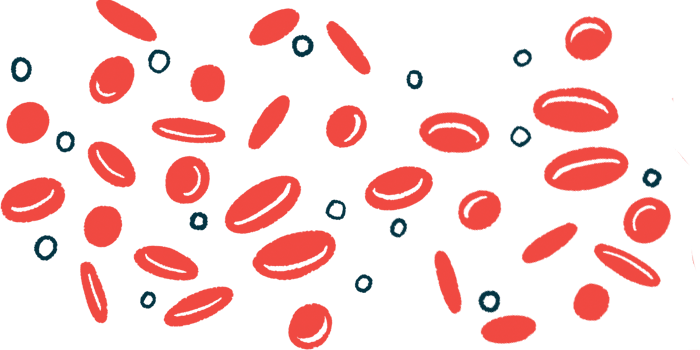Damage to Blood Vessels of Brain May Drive Parkinson’s Progression

The cerebrospinal fluid, which surrounds the brain and spinal cord, of people with moderately severe Parkinson’s disease shows evidence that damage to blood vessels meant to protect the brain may be a key driver of disease progression, a study based on findings in a Phase 2 trial reported.
This finding suggests that targeting ways to rebuild the blood-brain barrier — a highly selective membrane that shields the brain from pathogens and other insults carried in the bloodstream and retains nutrients — might help to treat Parkinson’s. One possible such treatment is nilotinib, evaluated in that clinical trial.
“To our knowledge, this is the first study to show that the body’s blood brain barrier potentially offers a target for the treatment for Parkinson’s disease,” Charbel Moussa, PhD, clinical research director of Georgetown University Medical Center’s Translational Neurotherapeutics Program and the study’s lead author, said in a press release.
“Much work remains to be done, but just knowing that a patient’s brain vascular system is playing a significant role in the progression of the disease is a very promising discovery,” Moussa added.
The study “CSF MicroRNAs Reveal Impairment of Angiogenesis and Autophagy in Parkinson Disease” was published in the journal Neurology Genetics.
Results from a Phase 2 trial (NCT02954978), reported this year, showed that nilotinib — approved to treat certain types of leukemia — was safe and led to a dose-dependent increase in dopamine, the chemical messenger essential for muscle control that is lost in Parkinson’s. Its use also slowed both motor and non-motor decline in patients treated long term with nilotinib at 300 miligrams (mg), this study’s highest dose.
Nilotinib, available under the brand name Tasigna for leukemia patients, works by blocking the activity of a protein called BCR-ABL that is known to support cancer development. However, this protein is also linked to several mechanisms in the brain, such as oxidative stress and alpha-synuclein-induced neurodegeneration, which play critical roles in Parkinson’s disease.
To understand the potential mechanisms underlying benefits found in the Phase 2 study, researchers at Georgetown University Medical Center — which sponsored that trial — analyzed the cerebrospinal fluid (CSF) of 75 study participants with moderately severe Parkinson’s.
Patients had been randomly assigned to one of two oral daily doses of nilotinib —150 mg and 300 mg — or to a placebo for one year. Samples from the CSF were collected after one year of treatment.
Following a three-month washout period, 63 patients were once again randomly assigned to the same treatment regimen — nilotinib 150 mg or 300 mg or a placebo — for an additional year in an open-label study extension. In total, the trial ran for 27 months.
During the trial, patients continued with their standard of care medications, and a third also used more innovative treatments, such as deep brain stimulation.
CSF were analyzed using next-generation whole-genome microRNA (miRNA) sequencing.
miRNAs are a special class of short RNA molecules capable of regulating gene activity, or expression, within cells. They bind to a particular gene’s messenger RNA (mRNA) — the molecule generated from DNA that is used as the template for protein production — to regulate the production of a given protein.
Analyses revealed significant changes in the levels of miRNAs that control genes involved in several pathways, including a cell’s natural cleaning system — called autophagy — and angiogenesis, the formation of new blood vessels. Another altered pathway was involved in the maintenance of the blood-brain barrier. These data suggest that these pathways are impaired in Parkinson’s.
Previous studies had shown increased CSF markers of angiogenesis and autophagy in brain tissue samples of deceased Parkinson’s patients. Now, analyses revealed an enrichment of markers suggestive of vascular damage in Parkinson’s.
In patients treated with nilotinib at the 300 mg dose, however, researchers observed an enrichment of pathways that help maintain the integrity of the brain-blood barrier (BBB), including the passage of important nutrients, such as glucose, into the brain and the elimination of toxins from it.
Nilotinib appeared to inactivate a protein called DDR1 that has been previously show to be increased in the brain of Parkinson’s patients and to contribute to the barrier’s degradation. By inhibiting DDR1, nilotinib could reverse the vascular impairments observed in the central nervous system, this way lowering inflammation and allowing for the production of dopamine.
“Our data demonstrate that DDR1 inhibition may counteract alteration in the microvasculature that may be associated with impaired BBB and angiogenesis, leading to motor symptoms,” the researchers wrote. “Targeting DDR1 is a feasible strategy to prevent BBB disruption and promotion of angiogenesis.”
“Not only does nilotinib flip on the brain’s garbage disposal system to eliminate bad toxic proteins, but it appears to also repair the blood brain barrier to allow this toxic waste to leave the brain and to allow nutrients in,” Moussa said. “Parkinson’s disease is generally believed to involve mitochondrial or energy deficits that can be caused by environmental toxins or by toxic protein accumulation; it has never been identified as a vascular disease.”







